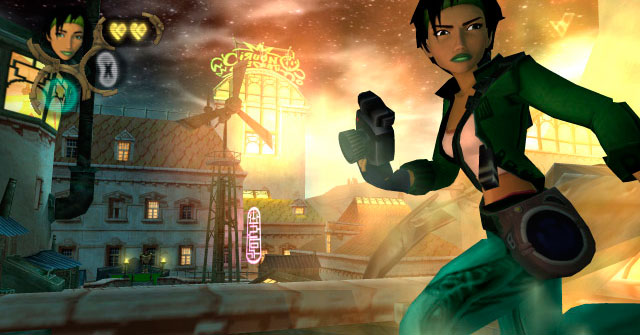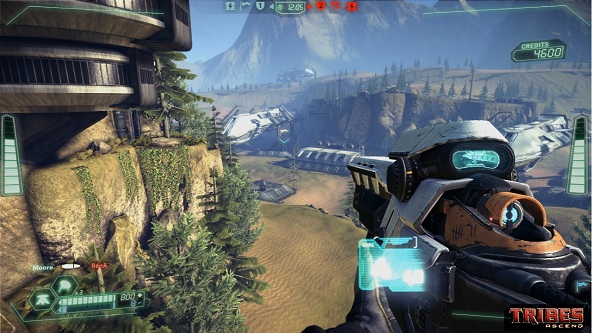

The Nintendo 3DS has finally arrived and with it, the next generation of handheld gaming. With glasses-less 3D and graphics that rival that of Nintendo’s own Wii console, the 3DS is certainly going to turn some heads and gain a lot of attention.
The system isn’t perfect however, and this is obvious after playing with it for an extended amount of time, but the new handheld is a step in the right direction for the future of Nintendo and handheld gaming. There are still some key issues with the system that may make waiting for the expected upgrade worthwhile. Read on for our full review of the Nintendo 3DS.
The 3DS is roughly the same size as the Nintendo DSi, but the long-time DSi faithfuls will notice that the 3DS has more bulk. The two screens on the 3D handheld are not the same size, instead the top screen (which utilizes the new 3D technology) is longer and is used to feature a wide screen aspect ratio. One of the biggest differences about the 3DS’ layout is the addition of a (well-needed) joystick. The stick feels loose but is very precise. More importantly, it opens the platform up to a wide array of new games and gameplay features – more than the D-Pad ever could. The overall design of the 3DS is a little clunky and inconvenient to shove in your pocket, but it’s certainly not the most uncomfortable thing I’ve ever held in my hands… I’m looking at you PSP Go!
The glasses-less 3D technology is obviously the key selling point of the Nintendo 3DS and for the most part it works pretty well. Once you’ve established a “sweet spot,” the 3D effects really do work quite well, and I was impressed with the way objects seem to be flying off the screen — all without the need for goofy 3D glasses. There is a drawback to the “sweet spot” however, as most people (myself included) have the tendency to move the device around in their hands while playing and that distorts the 3D. After awhile of time playing the unit, players will occasionally find themselves wanting to enjoy their game in standard 2D. Fortunately, Nintendo added a ‘3D Depth Slider’ which allows anyone to adjust the intensity of the 3D effects by simply toggling a slider on the right-hand side of the device. I found my eyes becoming tired after about 30 minutes of gameplay, but after given them a break for a little while, they were ready to go again.
While the Nintendo 3DS’ 3D is indeed its biggest feature, people won’t be able to enjoy it for elongated amounts of time, not because of the 3D strain on your eyes, but because the 3DS’ battery life lasts only three hours. The 3DS system itself comes with a standard A/C adapter and a charging cradle, and anyone who likes to spend long amount of time enjoying their handheld games is going to become well aquatinted with these two devices. After the battery dies it takes roughly three hours to completely recharge the unit, so if you plan on going out on a road trip anytime soon then you’re going to need to invest in a car adapter.
While the battery life may be extremely limited, the amount of hours that can be poured into the 3DS’ built-in software isn’t. The 3DS comes packed with several different pieces of software that are really quite fun. Face Raiders was the first game I fired up, and even though it’s a little gimmicky, after a while it’s still a lot of fun. To play Face Raiders you first can take a picture of a face, be it yours, a friend’s or a pet’s. After snapping the photo, the game will launch and the individual’s face you scored a picture of can now be seen flying around your room and breaking holes in the wall. You have to shoot balls at the faces in order to defeat them, and this is done by physically moving the 3DS around to see all of the attacking baddies.
The 3DS also comes with a feature called Augmented Reality, and it utilizes the Nintendo 3DS’ cameras to bring in-game material to life on real-world surfaces ( i.e. your coffee table). This feature works by reading a set of six specially marked cards that come with the 3DS. Five of the AR cards feature pictures of some of Nintendo’s biggest mascots, such as Mario, Samus, Link, Kirby, and Pikmin. These cards project an image of a statue of each respective character on to the surface of where the card is placed. You can change the poses that each character makes, and you can even have all five of the characters on screen at the same time. It may not do much other than look cool, but it’s a brilliant way to show off the potential of the AR functionality.
The question mark block from Mario fame is the last AR card that comes with the unit and it’s easily the most important. After the card is detected, a box will appear in the middle of the screen and various target challenges will occur, which actually require you to move the 3DS around the environment in a similar fashion to Face Raiders. These mini-games are a lot of fun, but they certainly aren’t without a few hiccups. The frame rate of the AR games can be pretty glitchy at times, and the 3D effects don’t really help to get the frame rate running much smoother. AR can be used for other games though, such as Nintendogs + Cats, to bring other characters and games to life on your table top. I found the Augmented Reality to be more even more interesting than the three-dimensional capabilities of the 3DS, and I believe there is some serious potential to be had in future games that utilize the feature. Real life Pokémon battles? Heck yes.
Continue to page 2 for our thoughts on Nintendo 3DS’ online features & more!
Continued:
« 1 2 »




 Primordia Review: A human story in a human-less world
Primordia Review: A human story in a human-less world Just Cause 3 Wiki – Everything you need to know about the game .
Just Cause 3 Wiki – Everything you need to know about the game . How to Troubleshoot Low RAM or Memory Leaks in Windows
How to Troubleshoot Low RAM or Memory Leaks in Windows Metal Gear Solid V: The Phantom Pain: All Posters Location Guide
Metal Gear Solid V: The Phantom Pain: All Posters Location Guide Learn Online Marketing For 96% Off The Normal Price
Learn Online Marketing For 96% Off The Normal Price